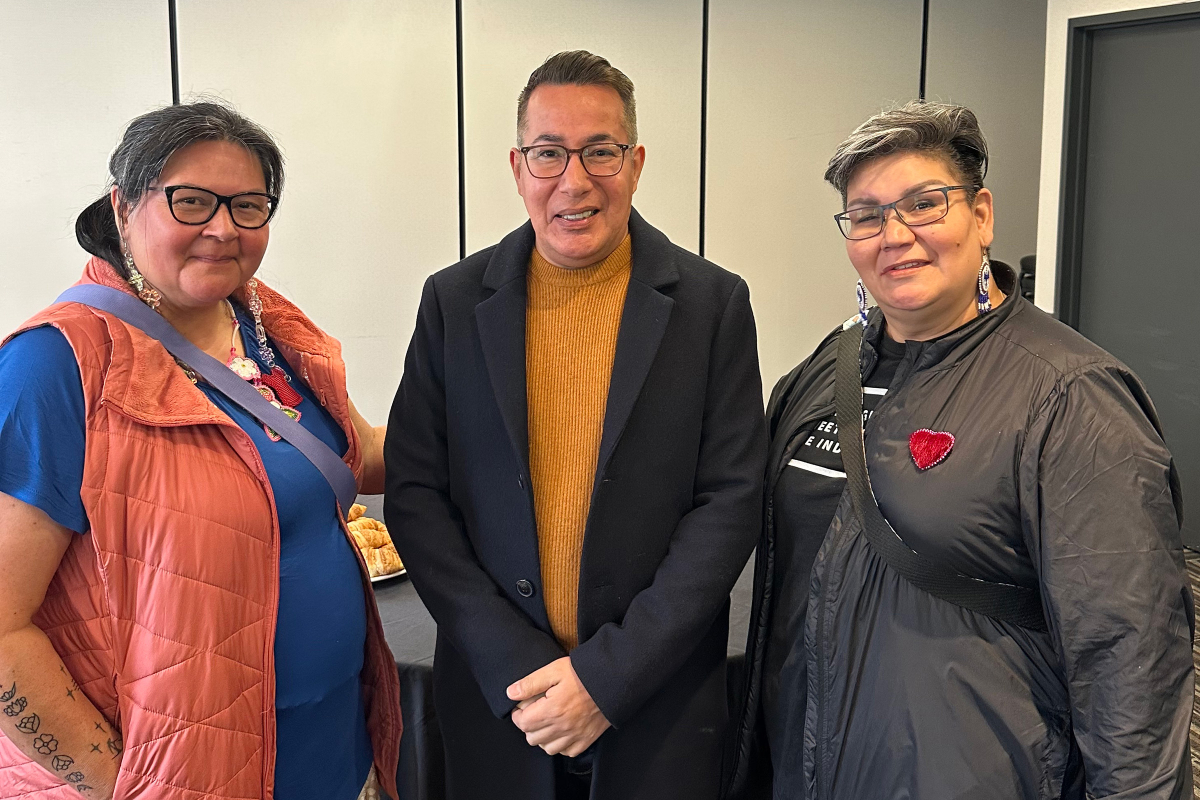Support strong Canadian climate journalism for 2025
Until she was in college, Colleen Cardinal thought she and her sisters were the only Indigenous people taken from their families at birth and adopted by a white family. Since learning she isn’t alone, Cardinal wants to make sure her story, and the stories of thousands of others, are heard.
Cardinal, a member of the Saddle Lake Cree Nation in Alberta, is a survivor of the ’60s Scoop. But when she went looking for others, she didn’t know where to start — there were no resources for survivors, Cardinal said, so she took it upon herself to start mapping them out. Now, Cardinal has asked a small group of survivors to tell their stories.
“We know that ’60s Scoop survivors are looking for other ’60s Scoop survivors. We know that we're looking for services, help and freedom of information,” Cardinal said. “So we're trying to help each other and create a network of belonging.”
In 1972, Cardinal and her two sisters were taken from their family near Edmonton. Cardinal said they spent three years in foster homes before being adopted by a non-Indigenous family in Sault Ste. Marie, Ont. When Cardinal was 16 years old, she and her sisters returned to Alberta and met their biological family. Cardinal said the experience was “painful.”
“We've never been around other Indigenous folks, so meeting our family, there was culture shock,” Cardinal said. “There were a lot of things that we didn't have context to… Nobody said anything to us about residential schools or colonialism.”
Ten years later, Cardinal said she had to leave Edmonton again. She moved to Ottawa to raise her two children and went back to school.
“I didn't really have any insight into my story at the time, I just knew that I was raised by white people and that I was adopted,” Cardinal said. “I thought I was pretty unique. I thought I was pretty much the only one who went through that.”
But at the age of 28, sitting in a university classroom, Cardinal learned her experience was shared by many. It even had a name — the ’60s Scoop. From about 1951 until 1984, Canadian child welfare authorities took more than 20,000 First Nations, Métis and Inuit children from their homes and placed them with white families.
“I wanted to find all these adoptees, I wanted to know where they are, I wanted to hear what they went through,” Cardinal said. But then, Cardinal said, that information wasn’t available.
Cardinal first decided to create a map after visiting a conference for grassroots human rights organizations in 2014. There, Cardinal said she came across a world map drawn on a large, white bedsheet on which visitors could map their stories out with colourful yarn.
“I thought, ‘Oh my god, that’s what we need to do,’” Cardinal said. “We need to show folks what displacement looks like, but we need to do it digitally so that people can access it from everywhere."
Since then, Cardinal said she’s been organizing funding to launch a geographic information system (GIS) map to illustrate the stories of ’60s Scoop survivors. Cardinal garnered the support of University of Regina ’60s Scoop researcher Raven Sinclair and digital mapping researchers at the University of British Columbia Okanagan campus.
In 2019, Cardinal launched the online mapping tool. Now, it includes the stories of more than 100 survivors who were displaced from across Canada to places as far as the U.K. and Botswana. The map illustrates where people were born and where they were moved. It logs birthdates, when people moved and if survivors met their biological families, the date that happened. Each entry includes space for people to share words and videos telling their own stories and contact information for survivors to connect with others.
Genetic Detective, a genetic genealogy service near Ottawa, has offered to subsidize DNA test kits for some survivors, create a database of survivors' genetic information and connect survivors to their biological families.
A small group of survivors gathered in Ottawa last week. They filmed themselves telling their stories in their own words, to create videos that will be posted on the map’s website. By sharing their stories, Cardinal said she hopes to normalize their experiences and create a community for survivors.
“I know as an adoptee how lonely it is and how isolating it can be. I needed (to find others). So if I needed it, others need it,” Cardinal said. “And if we want it done our way, we need to do it ourselves — by survivors, for survivors.”
Isaac Phan Nay / Canada’s National Observer/ Local Journalism Initiative






Comments